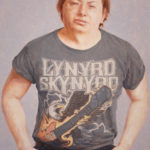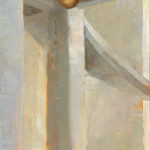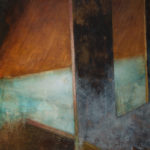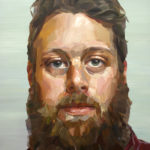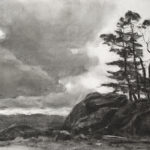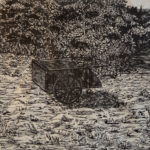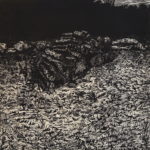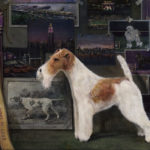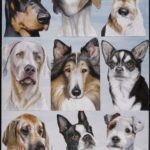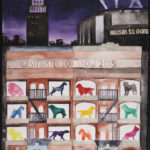Studio Portraits: Michael Black (MFA 2015)
Istanbul: A Mix of Ancient and Industrial
We arrived in Istanbul at the start of Ramadan. Sarah and I both have rooms in a girl’s dormitory in the Ortakoy district down the street from a small mosque. The mosque’s call to prayer happens around 5 times per day over load-speakers and the dogs on our block start howling back to the prayer, mimicking the sounds. It’s really haunting and peaceful.
Fatima from the front desk speaks no English, but managed to invite me to break Ramadan fast with some of the other women in the dorm at 3 AM. I initially declined due to the late hour, but thought better of it and woke up with the others. It was cool to participate in their tradition for the night. The Ramadan drums clanging through the streets each morning at 2 AM and the jet lag made for a particularly interesting first week, especially while adjusting to the 9am-4pm studio hours at Mimar Sinan.
It would have been extremely difficult to get situated without Erdal Kara, the Mimar Sinan lithography professor, showing us the ropes and helping with our first art supply trip. It was also a pleasure to meet the dean of the department, Mahmut. The two of them set us up comfortably in our studios and we got to work.
Preparing for this residency, I didn’t consider how much the language barrier would affect us. It was way more difficult than I anticipated. Through the last weeks I have been replacing hand gestures with actual words. I had a complete (yet simple) exchange in Turkish the other day, but I have so much on my mind lately that learning the language is slow going. Last week we saw Planet of the Apes. It was hilarious. We didn’t realize that half the movie portrays apes using sign language with Turkish subtitles. Luckily, the plot was simple and we got the gist. That is exactly how I feel all the time here: a pantomiming monkey with seriously limited vocabulary.
When we are not in the studio, we walk and walk and walk and explore and walk some more. One of my favorite historical sites so far is the ancient underground cistern. Built in the 6th century, it provided water to the city during the Roman Empire. I can’t describe it, so hopefully some photos will convey the space.
The city is a mix of ancient and industrial: gritty, loud, hot, mysterious, and romantic. The kittens, cargo ships, dome shaped architecture, cavernous cistern, vertical cobble-stone streets, layers of industrial buildings, and the general nautical vibe make it seem like we are walking through a Terry Gilliam movie most of the time.
Sarah wasn’t exaggerating about the cat thing. They are communally looked after by the people of the city and they really are everywhere. At the bus stop, under your feet, in the cracks of the sidewalk. Our first day at the studio, a cat was drinking out of the water spiget in the squat toilet. Most of them have crazy bright green eyes and they add a mystical aura to the city. It’s like a really cute plague.
Nick and Jake are staying at Ali’s place, a patron of the Academy. On our day off, Ali invited us to his family’s house on an island a short ferry ride from the city. We spent the day in their garden with Ali’s sister and her family chatting about art, movies, and philosophy while Jake played with Ali’s nephew, an adorable three-year-old. (listen up all you ladies out there…Jake’s a natural with the kiddies:) In the garden were plum trees, apple trees, lemon trees, pear trees and grape vines. Our hosts cooked us a homemade dinner with roasted eggplant salad, different meats, and a yogurt dip with herbs from the yard. It was incredible food. Partly due to Jake’s mad rent-a-dad skills we were invited back for a movie night sometime soon. We were being so pampered we almost missed our ferry back to the city. Running to catch it in time, it left as I stepped onto the deck.
As fantastical as I make it out to be, Istanbul is still is a modern city and has its own issues like anywhere else. Locals make me aware of certain political and gender issues, at any given moment someone is drilling into steel or stone with a power tool, and plastic bottles float in the Bosphorus. Also, the many street dogs are in sad shape. However, my personal experience has been pretty beautiful, and I have been treated warmly and kindly by just about everyone I have encountered.
In regards to my artwork, I usually work from a memory of a place, observation, or past event. I almost never work while simultaneously living in a new environment, experiencing strange and inspiring things each day. It’s a very cool mental experiment and I wish I had more time in this frame of mind. I wonder how working in this setting (and this delirious heat) will affect my art. Will I start making heat induced psychedelic color fields? a nautical series? Am I going to start endless paintings of kittens? Time will tell…
Lastly…one of the best parts of the trip has been traveling and working with Sarah, Jake, and Nick. I haven’t laughed this much in a long time. It’s lovely sharing this experience with them.
###
Erinn Heilman (MFA 2015), Nick Lepard (MFA 2015), Sarah Schlesinger (MFA 2015) and Jacob Hayes (MFA 2014) spent their summer in Istanbul on an Academy sponsored residency. Work inspired from their travels is currently on view in the Academy’s lobby. To learn more about their experiences visit the archive on the Academy’s blog and the residency page on the Academy’s website.
Artist-in-Residence Program at Istanbul 2015

During the summer of 2014 Jacob Hayes (MFA 2014), Erinn Heilman (MFA 2015), Nick Lepard (MFA 2015) and Sarah Schlesinger (MFA 2015, Fellow 2016) participated in a month-long Artist-in-Residence Program at Mimar Sinan University in Istanbul, Turkey.
This exhibition includes some of the work created during or attributed to their residency experience. The Academy’s Mimar Sinan University Residency has been made possible through the efforts of Mahmut Bozkurt, Erdal Kara, Ali Kerem Bilge, and Buket Atature (MFA 2012) as well as the New York Academy Travel Fund, the Villore Foundation.
- Jacob Hayes (MFA 2014)
- Jacob Hayes (MFA 2014)
- Erinn Heilman (MFA 2015)
- Erinn Heilman (MFA 2015)
- Erinn Heilman (MFA 2015)
- Nick Lepard (MFA 2015)
- Nick Lepard (MFA 2015)
- Sarah Schlesinger (MFA 2015, Fellow 2016)
- Sarah Schlesinger (MFA 2015, Fellow 2016)
- Sarah Schlesinger (MFA 2015, Fellow 2016)
- Sarah Schlesinger (MFA 2015, Fellow 2016)
Studio Portraits: Kiki Carrillo (MFA 2015)
Studio Portraits: Luke Tromiczak (MFA 2015)
Studio Portraits: Sarah Schlesinger (MFA 2015)
Studio Portraits: Jake Ingram (MFA 2015)
Studio Portraits: Sarah Novio (MFA 2015)
2015 Westminster Kennel Club Artwork Competition
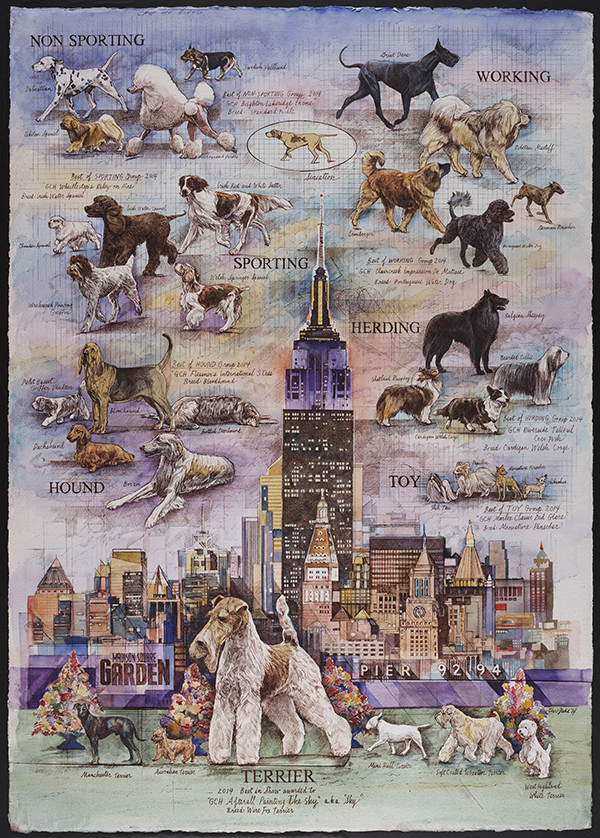
The Westminster Kennel Club Artwork Competition is a skills contest in which entrants submit artwork for use and inclusion in the promotional materials for the Westminster Kennel Club 139th Annual Dog Show. Coordinated by the New York Academy of Art and the Westminster Kennel Club the competition is open to Academy MFA students and alumni, and current continuing education students.
The 2015 Winner and Finalist works represented the Academy in our gallery booth at the 139th Annual Dog Show.
Congratulations to competition winner Chris Duke (MFA 2003), and finalists Leslie Adams (MFA 1992), Kristina Cao (MFA 2012), Fiona Hernuss (MFA 1998), Meredith Lachin (MFA 2011), and Benjamin Martins (MFA 2011).
Generous support and art shipping provided by Cadogan Tate Fine Art.
For further information please contact: 212.842.5971 / exhibitions@nyaa.edu
- Leslie Adams (MFA 1992)
- Kristina Cao (MFA 2012)
- Chris Duke (MFA 2003)
- Fiona Hernuss (MFA 1998)
- Meredith Lachin (MFA 2011)
- Benjamin Martins (MFA 2011)



